
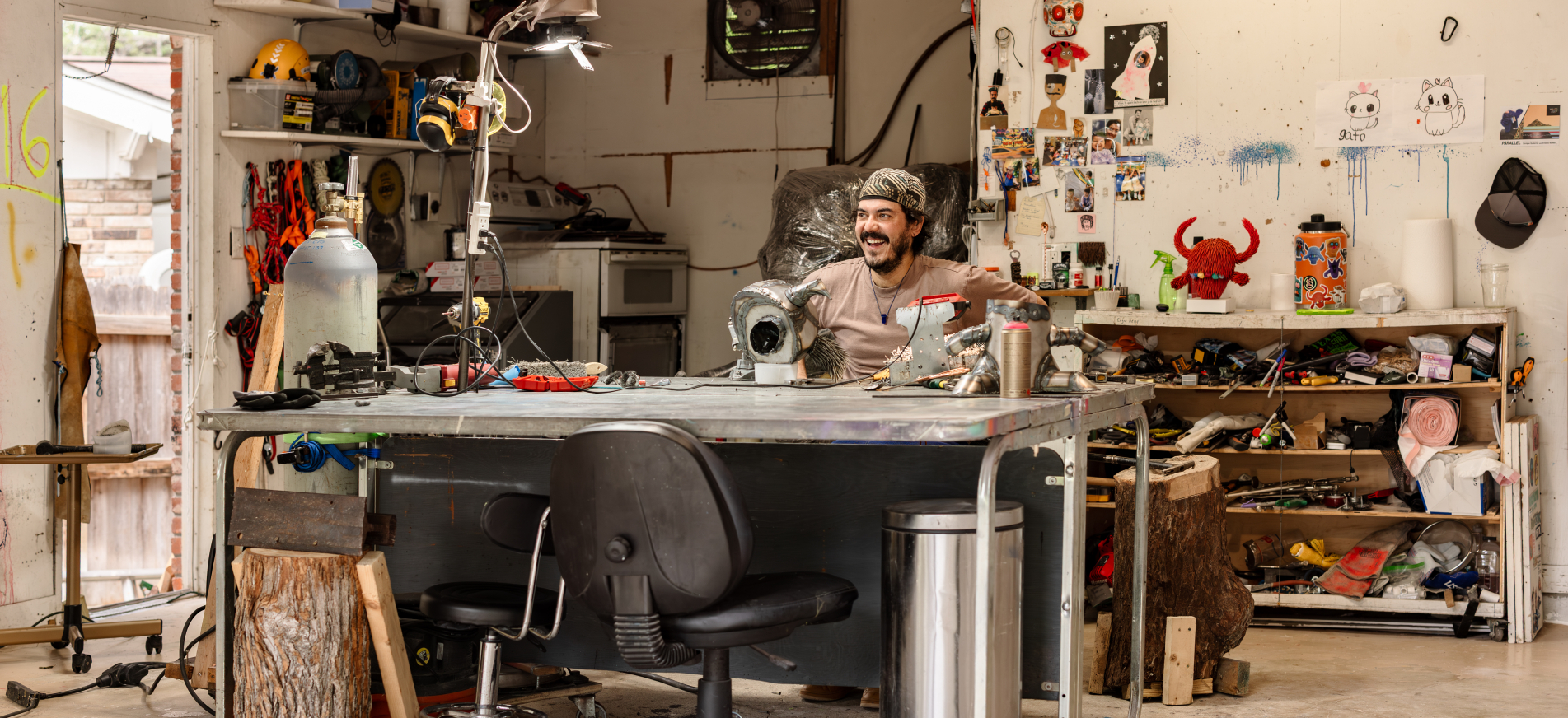
Ernesto Ibañez has forged a unique identity in the realm of contemporary sculpture, establishing a practice built on meticulous dedication and a fascinating material contradiction. Originally from Guadalajara, Jalisco, Mexico, where he graduated from the School of Arts at the University of Guadalajara in 2010, Ibañez emigrated to the United States, settling in San Antonio, Texas. Though his earlier university work maintained a deep connection to nature and involved extensive use of stone and wood, his move to the U.S. prompted a focused search for an original personal stamp that sets an artist apart.
We visited him in his studio and discussed the challenges of developing a unique identity in art, his keen observations with great attention to detail, and the experience of his magnificent creatures.
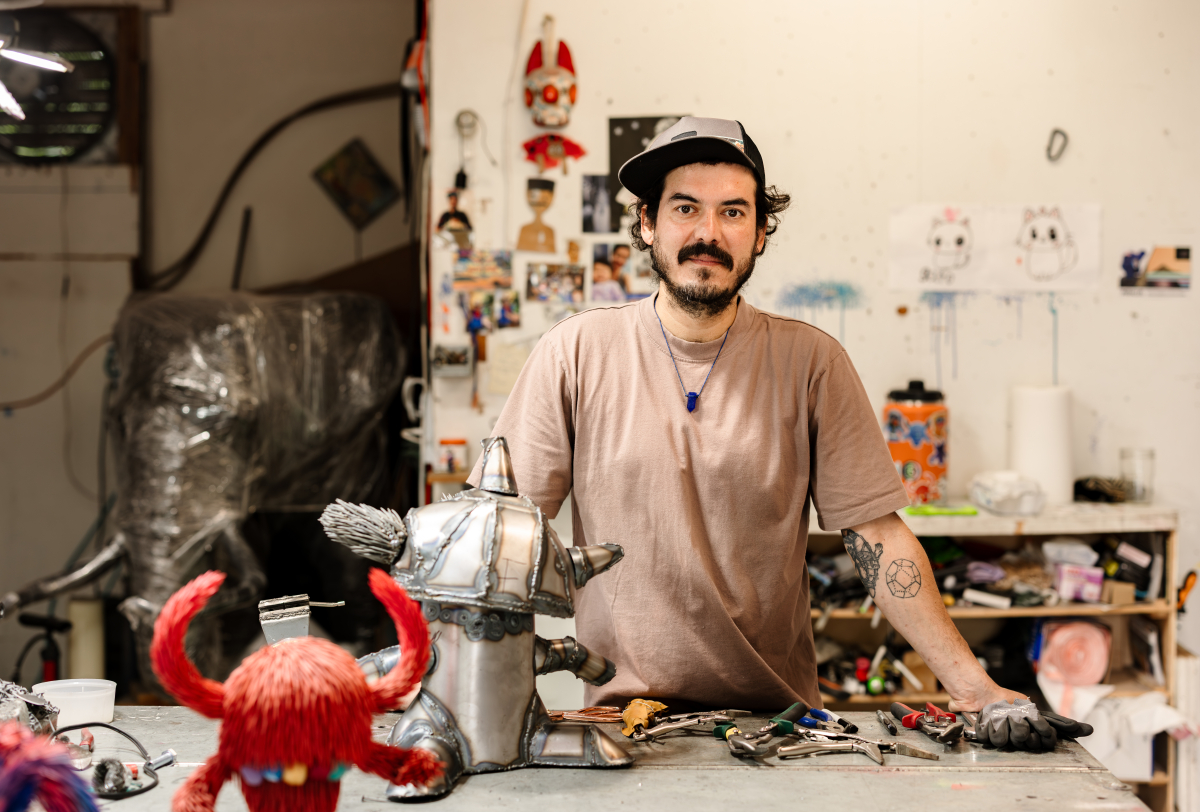
MiSA: Please tell us about your background in Guadalajara and how you feel it has shaped your practice and work.
Ibañez: Speaking about the education I received in Guadalajara, where I studied my degree, I can highlight that the classes were mainly focused on manual skills. We had long studio sessions that required us to spend a lot of time in the workshop. Another important point to consider is that sculpture, in most cases, requires a lot of time and involves multiple processes, which naturally results in extended hours in the studio.
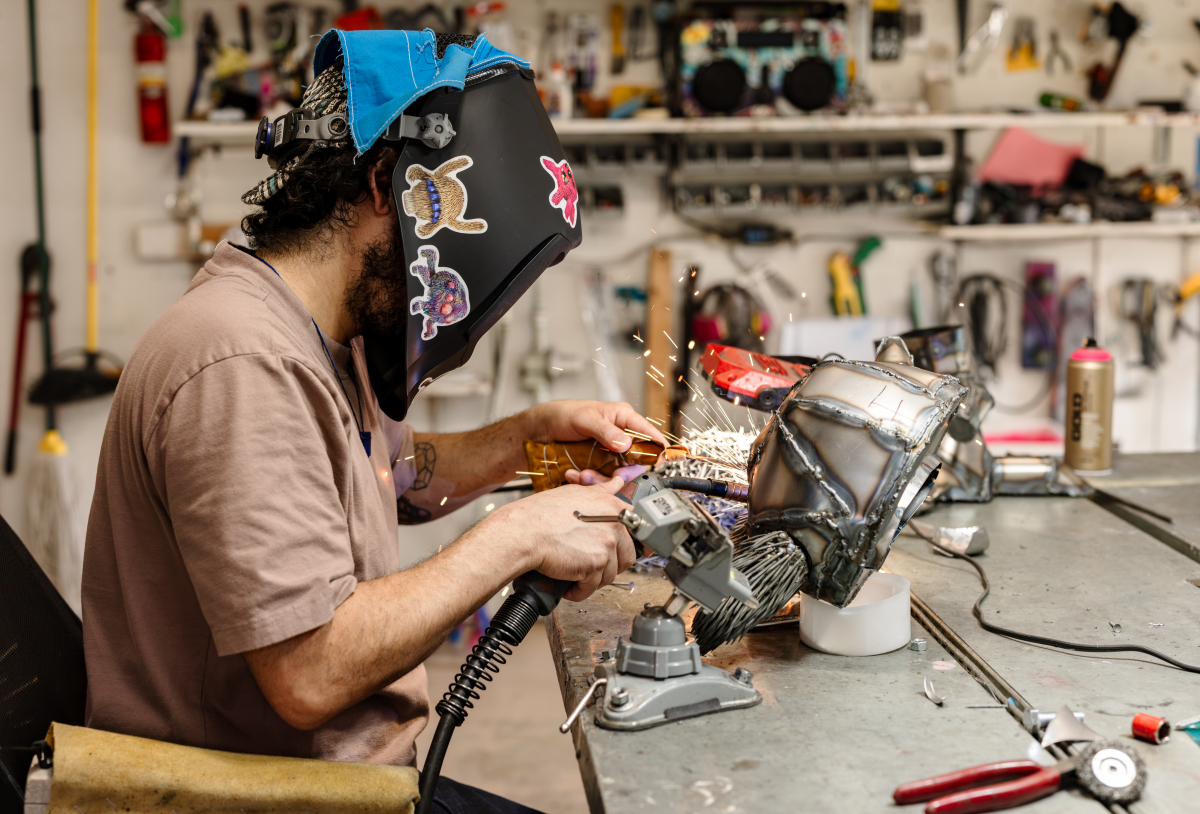
MiSA: Your sculptures straddle the line between the natural and the engineered. What first drew you to replicate the texture of animal fur using industrial nails?
Ibañez: I use nails as an aesthetic resource to replicate fur, since the painting process requires the piece to be kiln-fired. The nail has the qualities that allow me to achieve my aesthetic goal. In terms of form, I’m interested in replicating nature—whether it be insects, animals, or monsters.
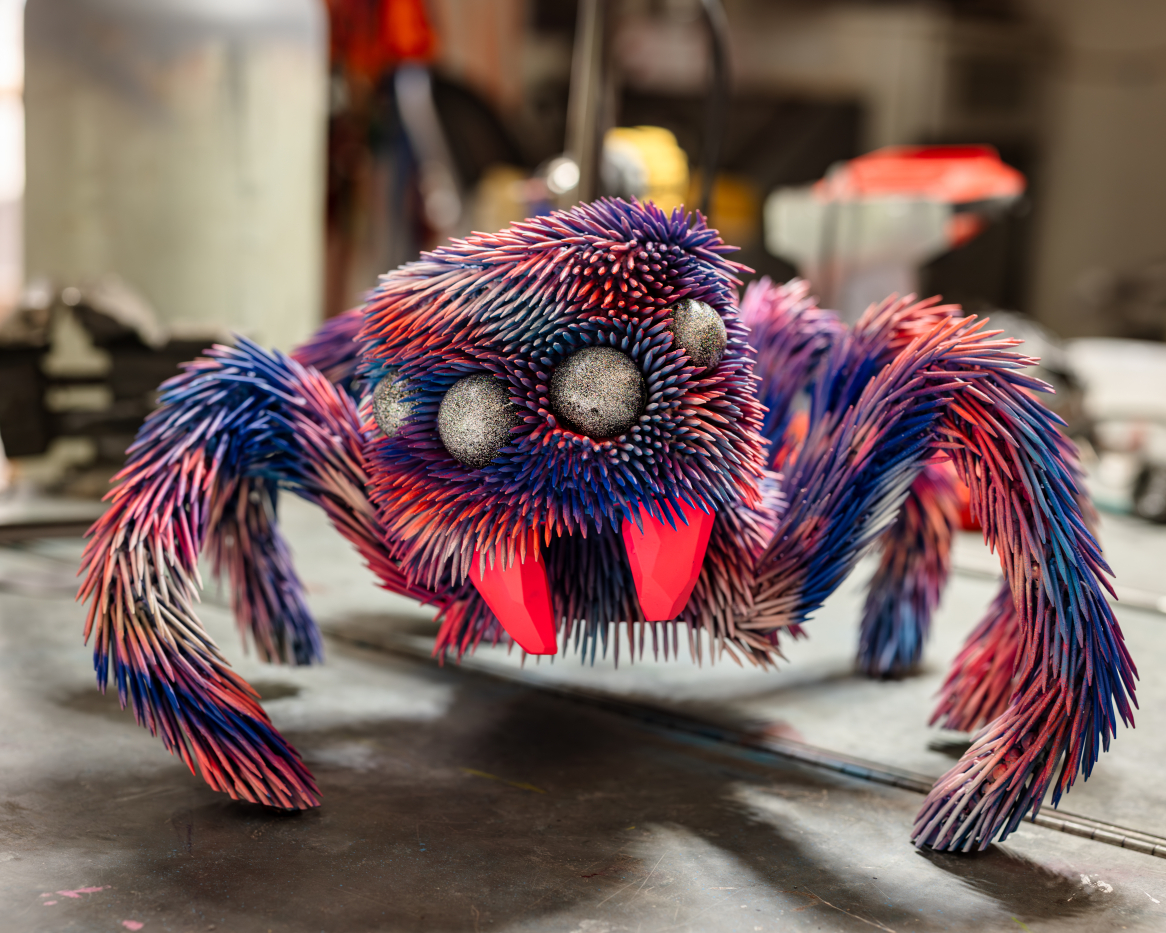
MiSA: There’s a tactile illusion in your work that confounds the viewer. How intentional is that interplay between visual softness and physical hardness—and what does it say to you about perception in general?
Ibañez: At first, the idea was to imitate fur using nails in a way that would be visually pleasing and truly resemble real fur. Among the materials I explored, I found a particular type of nail that I continue to use—it’s neither too thin nor too thick. This nail offers the resistance, flexibility, and hardness that I need.
In the end, the combination of using this nail and working within the limitations of the piece resulted in a rigid 'fur,' but one that creates a visual illusion of softness. People always want to touch the sculptures, even knowing they’re made of metal and that it’s not a soft material—it's as if there's a need to connect with something that looks soft, even when they know it isn’t.
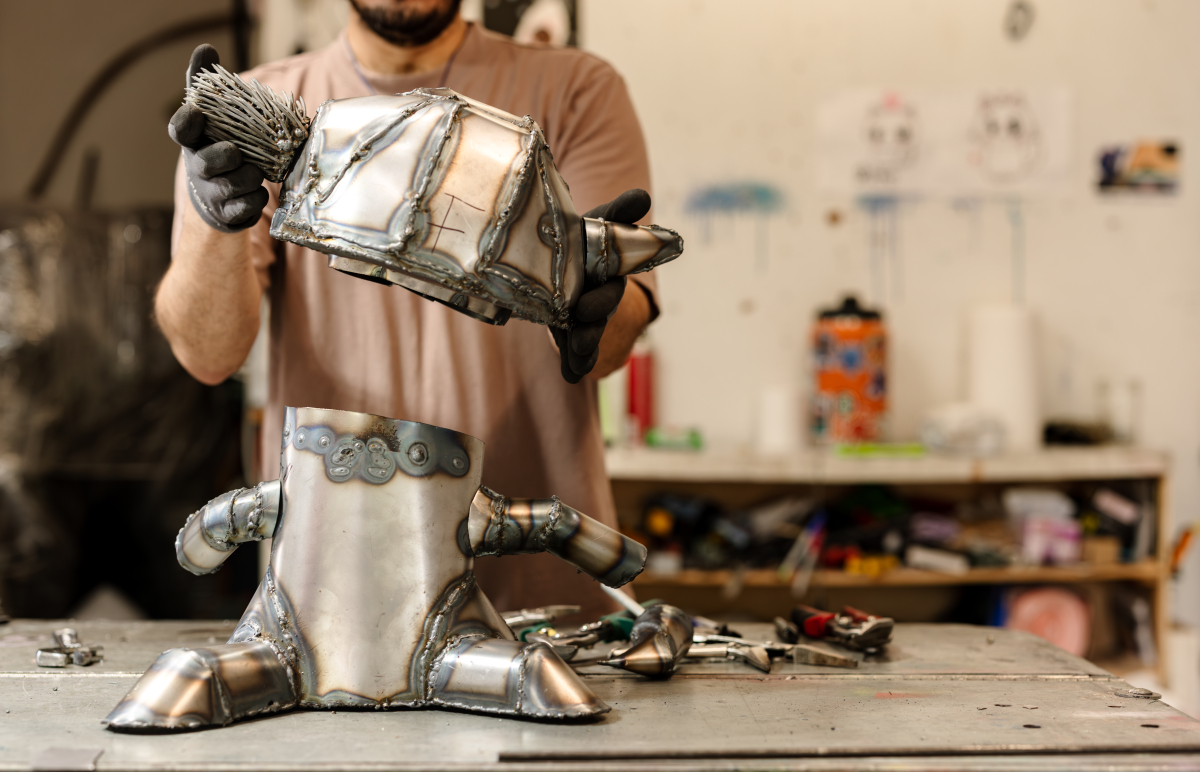
MiSA: You began with familiar animals—rabbits, dogs, pumas—but have shifted into the realm of insects and imagined creatures. What inspired that evolution, and how do you see it affecting the emotional response to your work?
Ibañez: I started by replicating real animals using nails as a medium, and then moved on to insects and more imaginary or monstrous creatures. This shift came as part of a natural artistic evolution. I enjoy constantly searching for new sources of inspiration, and in a way, I appropriate them as I continue developing my creative identity. However, I don’t feel tied to this particular style—I like to keep exploring and allow myself to evolve.
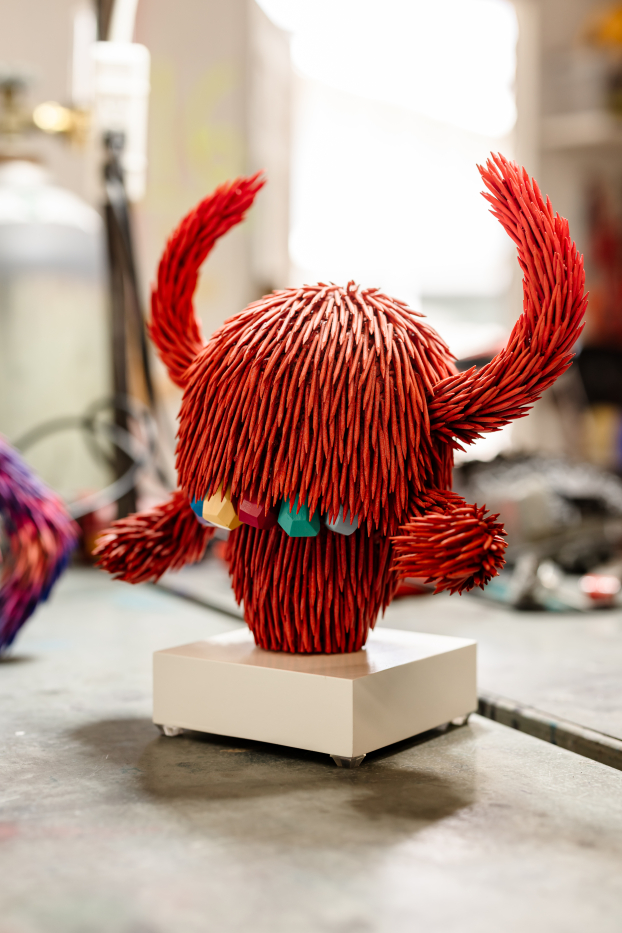
MiSA: Much of your work explores the uncanny, even monstrous. Do these creatures reflect something internal—personal fears or dreams—or are they more symbolic of collective human myth?
Ibañez: By creating monsters and insects, I feel a direct connection to childhood. I believe that stage of life holds a creative freedom we shouldn’t lose as we grow older—the ability to appreciate simplicity and to create without being bound by anatomical or technical rules. Over time, many adults lose that spontaneity, and through my work, I try to bring it back. Since I began working with this intention, I’ve noticed that my work connects more with children. That’s very meaningful to me, because they are the artists, collectors, curators, and scholars of tomorrow. Planting the seed that art is not distant or unreachable is something I believe is essential.

MiSA: You’ve mentioned the importance of a “personal stamp” in your practice. How do you define artistic originality in an era so saturated with image and influence?
Ibañez: I feel fortunate to have found a visual language—or signature—that defines my work. I believe this is one of the most challenging aspects of being an artist: when someone can recognize your work without knowing who made it. I think this develops through practice and reveals itself gradually, as if the work itself were shaping its own character over time.

MiSA: Your influences include artists like Cattelan, Koons, and Orozco—figures known for pushing boundaries. In what ways has their work shaped your own, and where do you intentionally diverge?
Ibañez: I believe the artists I mentioned share something in common with one another—and with my own work: many of their pieces aim to present everyday situations or familiar elements. For instance, Jeff Koons’ balloon dog starts from a very simple idea, yet becomes technically complex in its production. Similarly, Maurizio Cattelan’s installations with horses transform common imagery into something striking through context and scale.
Gabriel Orozco achieves this as well, like in his piece featuring the enormous whale skeleton he intervened by painting. The skeleton itself may seem simple or natural, but the way he transforms it is what makes it powerful. That ability to take something familiar and turn it into something extraordinary—that, to me, is the key.
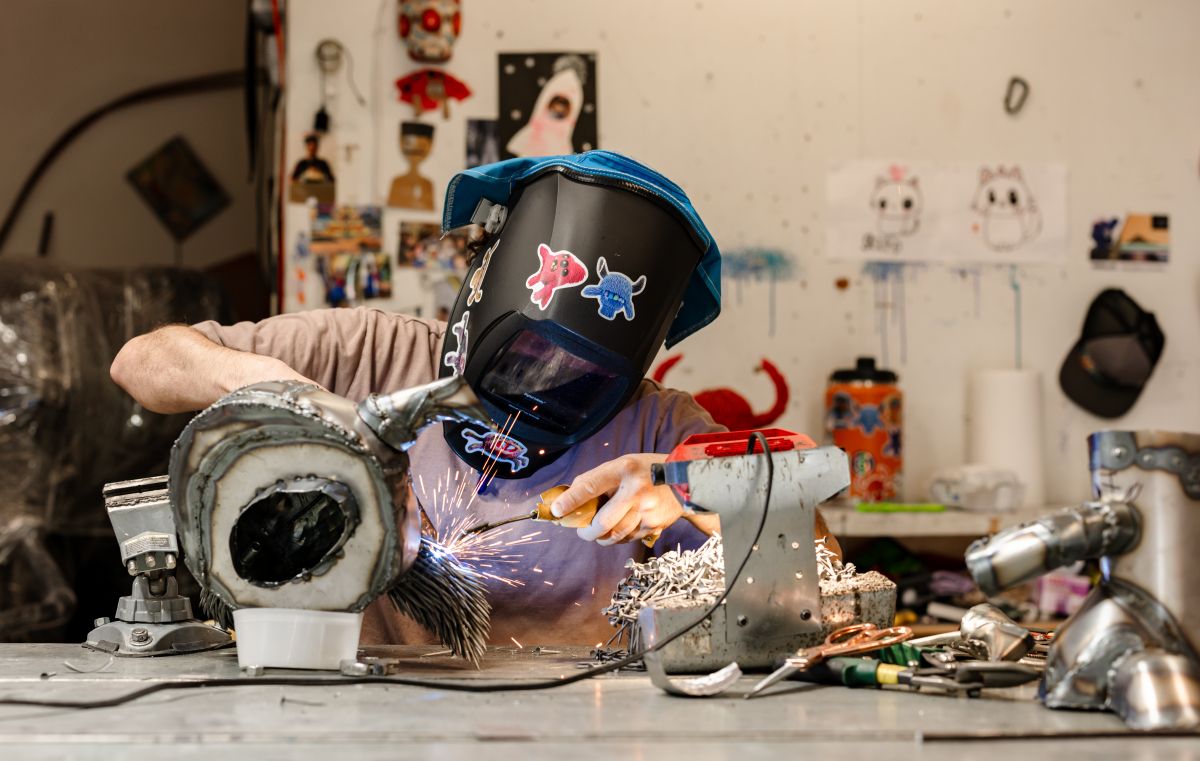
MiSA: Working with nails must demand an immense amount of precision and patience. What does your process actually look like—day to day, hour to hour—in the studio?
Ibañez: My work is divided into several stages or processes. The first step is defining what I want to create. Once the idea is clear, I develop the form using cardboard folders. This material behaves similarly to the steel sheets I use in the final pieces, but it allows me to quickly create a mock-up. It also helps me generate the patterns I later use to cut the steel.
Once the structure is defined, I move on to placing the nails. This stage is more repetitive and less creative than the first, but it’s equally important. After placing the nails, I begin the painting process, which once again requires a high level of creativity. Although all three stages involve creativity, each one demands it in a different way. The production time varies greatly: a small piece may take about a week, while a large one can take a year or even longer.

MiSA: As someone who emigrated from Guadalajara to San Antonio, how has that cultural shift shaped your visual language or artistic concerns?
Ibañez: La influencia cultural de haber migrado de Guadalajara a San Antonio ha sido un complemento valioso para mi obra. San Antonio es una ciudad muy rica en cultura en general, y especialmente en cultura hispana. Considero que ha enriquecido mi práctica artística al permitirme ver ambos lados de la moneda: por un lado, los habitantes que llevan generaciones aquí y que conservan con orgullo su herencia latina; y por otro, los que, como yo, hemos llegado más recientemente y encontramos en esta ciudad un lugar donde podemos sentirnos como en casa.

MiSA: People often want to touch your work, drawn in by its textural illusion. What role does physical interaction—or even the desire for it—play in your understanding of sculpture?
Ibañez: Viewer interaction with my pieces is inevitable—people constantly want to touch them, which is part of what a three-dimensional work naturally invites. However, while I understand that impulse, it's not ideal for the pieces, as touching them can cause damage or create an unwanted patina over time.
MiSA: Looking ahead, how do you see your work evolving? Will the monstrous and the insectile remain, or are you sensing another transformation on the horizon?
Ibañez: Looking ahead to the future of my work, I'm not sure if I will continue focusing on insects or monsters. For now, I have many ideas and pieces in mind that I’d like to bring into the physical realm. I remain open to evolution and am interested in exploring new directions without limiting myself to a single theme.
For more information on Ernesto Ibañez, visit his website, or follow him on Instagram.